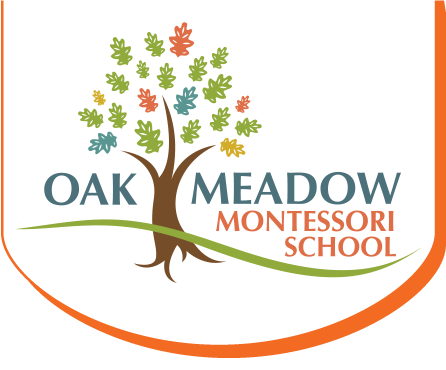The student’s face lit up with excitement as he mastered a new skill. One of our teachers in Children’s House, Marissa Poole, sat on the carpet, across from the child, both of them facing the learning activity taking place. Working one-on-one with this student, the teacher helped him stretch his ability to create new words on his own. Over the course of about an hour, the teacher met with many students, often one-on-one or sometimes in small groups of two or three, exploring a variety of lessons in writing, reading, and math. In each instance, the teacher had carefully planned the activity that would most support each student’s trajectory of growth and learning to the next level of skill development. The teacher kept notes about each student’s growth, on an individual notecard, thinking ahead about ways to help each student discover how to self-correct and make improvements.
 Following the class, Marissa told me the latin root of the word assess means to “sit beside.” This is a wonderfully apt description of what actually happens in classrooms at every program level at Oak Meadow. “Sitting beside” implies a radically different approach to assessment in Montessori schools compared with traditional schools. Due to the influence of the industrial age at the turn of the twentieth century, over a hundred years ago, nearly all schools adopted a factory model of student assessment. Students were seen as empty containers, and teachers were tasked with pouring predefined grade-level content knowledge into the student, testing the child’s content acquisition along the assembly line of education, making sure students could regurgitate factual knowledge correctly in comparison to average expectations. Maria Montessori believed this factory approach was unscientific and antithetical to real learning, and she built her schools on an approach designed to tap into the innate curiosity and interests of the child as a more effective path toward lifelong learning as well as academic competency.
Following the class, Marissa told me the latin root of the word assess means to “sit beside.” This is a wonderfully apt description of what actually happens in classrooms at every program level at Oak Meadow. “Sitting beside” implies a radically different approach to assessment in Montessori schools compared with traditional schools. Due to the influence of the industrial age at the turn of the twentieth century, over a hundred years ago, nearly all schools adopted a factory model of student assessment. Students were seen as empty containers, and teachers were tasked with pouring predefined grade-level content knowledge into the student, testing the child’s content acquisition along the assembly line of education, making sure students could regurgitate factual knowledge correctly in comparison to average expectations. Maria Montessori believed this factory approach was unscientific and antithetical to real learning, and she built her schools on an approach designed to tap into the innate curiosity and interests of the child as a more effective path toward lifelong learning as well as academic competency.
 Marissa met with me to explain more fully how she applies this in her classroom. “I create daily and weekly ‘to do’ lists for my students. I know what my kids know and what they don’t know. For the younger students, I define the goals that will help each child take the next step of real progress. By the time they are in the 3rd year of Children’s House, each child has a Kindergarten planner. Students select what they want to work on during a particular time, within teacher-established boundaries, including weekly progress in journal writing, handwriting practice, reading practice, number writing, and number operation work. I review the journal at the end of each day to determine what lessons would be most helpful. If the same problem is occurring with two or three students, I work with that group together. If students are struggling with different problems, I set them up side by side and observe them as they work through their individual activities. In language and math, I can see real growth occurring for students each month, and the semester report for parents is an opportunity to check progress against benchmarks and goals.”
Marissa met with me to explain more fully how she applies this in her classroom. “I create daily and weekly ‘to do’ lists for my students. I know what my kids know and what they don’t know. For the younger students, I define the goals that will help each child take the next step of real progress. By the time they are in the 3rd year of Children’s House, each child has a Kindergarten planner. Students select what they want to work on during a particular time, within teacher-established boundaries, including weekly progress in journal writing, handwriting practice, reading practice, number writing, and number operation work. I review the journal at the end of each day to determine what lessons would be most helpful. If the same problem is occurring with two or three students, I work with that group together. If students are struggling with different problems, I set them up side by side and observe them as they work through their individual activities. In language and math, I can see real growth occurring for students each month, and the semester report for parents is an opportunity to check progress against benchmarks and goals.”
Now in the early 21st century, in an era of innovation, nearly all educators and business leaders agree that the factory model of student assessment has little relevance to the real world. Over the last few years, many innovative schools have been considering different approaches to student assessment that, quite frankly, build on practices more similar to Montessori schools. This is particularly evident in the evolution of what is often referred to as the “mastery” approach to student assessment, something we embrace at Oak Meadow School.
As we look to the future of Oak Meadow School, here are some of the concepts about assessment and lifelong learning that I believe are incredibly beneficial to our students:
- Everything that happens in the classroom is designed to help each child achieve more of their individual and unique potential.
- The purpose of school is to support student growth and learning, and nurture a path of measurable, evidence-based progress throughout the school year.
- Rather than being threatened by the success of other students, students adopt a growth mindset that allows them to look at the achievements of others as an opportunity to learn themselves how to make improvements.
- Students come to realize that learning is not a final destination or something unique to school–learning is a lifestyle that ensures growth, flexibility, adaptability, and success in a way that is uniquely matched with each student’s talents and interests.
- Teachers are constantly growing themselves, and refining their capacity to help each child master the relevant knowledge and skills critical in the world they are growing up in today.
- Teachers believe that every student is capable of greater success, and they never let students simply settle for good enough. Teachers look for, and expect to see, evidence of student progress. When students bump into obstacles and setbacks, teachers work patiently with students and parents to help each student uncover the best path forward.
- Students who learn to be self-evolving, self-navigating learners are most likely to thrive in the dynamic world of the 21st century.





